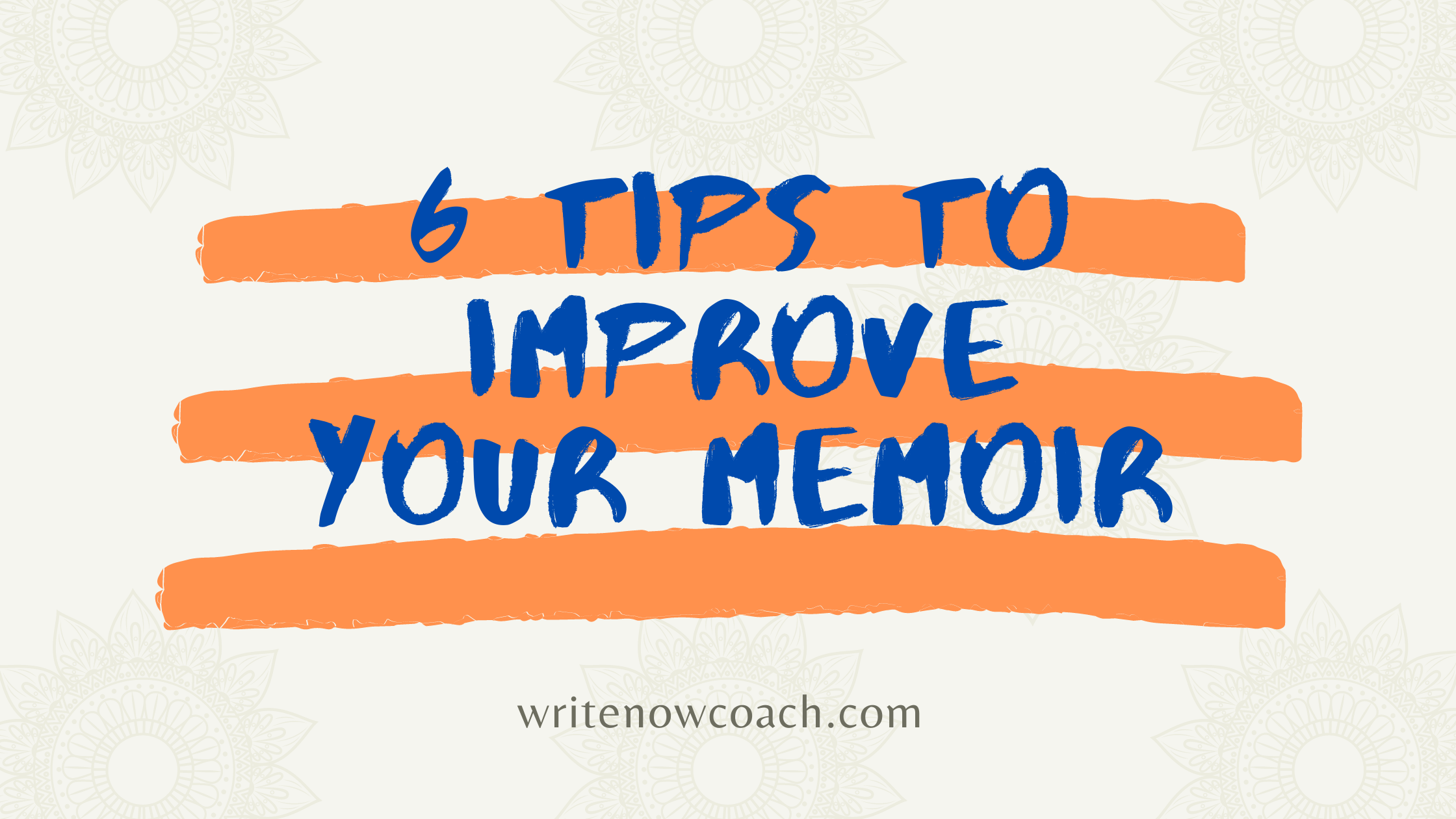How to Improve Your Memoir
November 17, 2020
Note From Rochelle
Dear readers,
Today’s post updates an article I wrote eight years ago. If you’re writing or hoping to write memoir, read on. These ideas will help you make your story sing! And don’t forget to check out last week’s post from Sue William Silverman on how writing memoir can change your life.
Enjoy!
Rochelle

How to Improve Your Memoir
By Rochelle Melander
I gather together the dreams, fantasies, experiences that preoccupied me as a girl, that stay with me and appear and reappear in different shapes and forms in all my work. Without telling everything that happened, they document all that remains most vivid.
—Bell Hooks
I admit it: I’m a book junkie. I seek out books hoping for a fix—something that will help me face challenges, overcome crisis, and move forward. In Women Who Run With The Wolves, Clariss Pinkola Estes says it this way:
“Art is important for it commemorates the seasons of the soul, or a special or tragic event in the soul’s journey. Art is not just for oneself, not just a marker of one’s own understanding. It is also a map for those who follow after us.” (p. 15)
For me, stories provide better maps than how-to books. That’s why I devour memoirs: to learn how other people have navigated life’s challenges. After reading more than 100 memoirs (and writing one myself), here’s a short list of what I think makes a memoir rich and interesting:
ONE: Tell us about the tough times
I appreciate memoirs that reveal how someone faced and overcame life’s difficulties. After all, who wants to read about happy? As William Zinsser said in his book, Writing about Your Life, “Happy is bad news for writers.” (p. 11) We want to read about the tough experiences: brain tumors, abuse, cancer, difficult parents and rebellious children. We don’t want to hear about anyone’s shiny, happy life. That would be boring. And hopefully, as we read about how the author overcame stuff, we are able to figure out our lives and crawl over our own hurdles as well.

TWO: Use humor!
In Blindsided: Lifting a Life Above Illness: A Reluctant Memoir, Richard Cohen wrote, “I was not a victim. Nor did I want to be. Victim status embodies all that I reject about the struggles of life. The challenge is to live and function well under all circumstances, including those never anticipated, like illness.” (p. 101) One of the ways to rise above victim status is through humor. In her funny memoir, I Had Brain Surgery, What’s Your Excuse?, Suzy Becker shared how every aspect of her life had changed because of brain surgery. She did this in a large part through her cartoons.
THREE: Tell all the truth, but tell it slant (Emily Dickinson).
I like memoirs that take risks in the way they tell the story. Suzy Becker did this by telling her stories through both words and cartoons. In Blue Suburbia, Laurie Lico Albanese used sparse poetry to tell her story about growing up in a distant home in American suburbia, the abuse she experienced at the hands of a neighbor, and her struggle to be happy with her ordinary adult life. Other memoirs tell their stories in bite-sized pieces. These short pieces make it easy for the reader to take in both big ideas and huge amounts of emotion. Mary Rose O’Reilley did this well in her book The Barn at the End of the World: The Apprenticeship of a Quaker, Buddhist Shepherd. This book is part memoir, part collection of essays. The subtitle tells exactly what the book talks about: her apprenticeship work as both a shepherd and a Buddhist.
FOUR: Take us on a journey.
Anna Quindlen said, “Books are the plane, and the train, and the road. They are the destination, and the journey. They are home.” The most effective memoirs take the reader along as the writer goes on an external pilgrimage as well as an internal journey of discovery. In the memoir Wild, Cheryl Strayed takes the reader on her hike of the Pacific Crest Trail and her interior journey overcoming the death of her mother and the end of her marriage. In Swinging on the Garden Gate, Elizabeth Andrew takes a bicycle trip. In Looking for Mary (or the Blessed Mother and Me) author Beverly Donofrio travels to Medjugorje—and embarks on a personal journey of faith.
FIVE: Give us the details.
Great memoirs use details to carry the story. They have a clear sense of place—because the physical landscape is also a reflection of the internal landscape. As Sue William Silverman says in Fearless Confessions, “Craft and slant external details that shed light on the internal emotions of you, the narrator. These images also enhance the atmosphere of the piece.” (p. 12)
SIX: Use your voice.
You know voice when you read it. An author with a great voice can hold your attention even when she is talking about purchasing toilet paper. Sue William Silverman cautions memoir writers, “The voice of each piece you write needs its own tone, rhythm, vocabulary, and energy.”
AND don’t forget the why:

Now I want to hear from you: what makes a memoir great? Leave your comment on the blog!








